A Smart Energy Recovery System to Avoid Preheating in Gas Grid Pressure Reduction Stations
Abstract
:1. Introduction
Review of the Literature on the Ranque–Hilsch Vortex Tube
2. Energy Recovery System Based on RHVT
3. Models and Data
3.1. RHVT Techno-Economic Model
3.1.1. Prediction of RHVT Performance for Expansion to Ambient Conditions for Gases Other Than Air
3.1.2. Prediction of RHVT Performance for Gas Expansion to Any Backpressure
3.1.3. Validation of the RHVT Performance Sub-Model
3.1.4. RHVT Cost Function
3.2. HE Techno-Economic Model
HE Cost Function
3.3. Data from PRSs of the Italian Gas Grid
4. Methods
4.1. Economic Evaluations
4.1.1. Calculation of the Preheating Costs
4.1.2. Calculation of the Energy Recovery System Cost
4.2. Design Optimisation Procedure for the RHVT–HE System
5. Application of the Design Optimisation Procedure
6. Results
6.1. Impact of PRS Operating Conditions on the Economic Feasibility of the System
- The PP decreases by increasing the PRS inlet pressure and the expansion ratio;
- The PP reaches a maximum at expansion ratios in the range between 2.5 and 3.5. This behaviour is due to the peak in the RHVT flow split, which is responsible for the HE size. As shown in Figure A1, the maximum PP always occurs at expansion ratios between 2.5 and 3.5 and increases as the inlet pressure increases. Analogous confirmation derives from the cost trends shown in Figure A7, Figure A10 and Figure A11;
- A decrease in the size of the PRS tends to increase the overall PP of the system;
- A decrease in the design ambient temperature leads to an increase in PP, regardless of the PRS size and inlet/outlet pressures. In general, the space of feasible solutions is reduced as the ambient temperature decreases. This statement summarises the results shown in Figure 15, where the technically feasible (blue markers) and unfeasible (red markers) PRS inlet/outlet pressure pairs are reported for ambient temperatures equal to −5 °C in Figure 15a, and −10 °C in Figure 15b. For ambient temperatures above −5 °C, the RHVT–HE system is always technically feasible, regardless of the PRS entrance and exit pressures.
6.2. Potential Application of the RHVT–HE System to the Italian Gas Grid
7. Conclusions
- It is most convenient to install the system in PRSs working at inlet pressures above 55 bar;
- Expansion ratios lower than 2 penalise the economic feasibility of the system;
- In general, the lower the PRS inlet pressure, the higher the penalty due to low expansion ratios;
- PRSs having an annual averaged volumetric flow rate below 100 Sm3/h are not economically feasible applications;
- If the design ambient temperature is below 0 °C, the system becomes technically unfeasible for many PRSs.
- It is possible to avoid up to 95% of preheating costs by installing economically feasible systems (PP < 20 years) at a design ambient temperature of 0 °C. If the ambient temperature is reduced to −5 °C and −10 °C, the preheating costs savings are dramatically reduced to 33% and 23%, respectively;
- The system must be installed in locations that impose a design ambient temperature of at least 0 °C to achieve PPs less than 10 years. In particular, an ambient temperature equal to 0 °C allows savings of up to 40% of the preheating costs. The preheating cost savings rise to 80% if the design ambient temperature is at least 5 °C;
- PPs commonly accepted for investment by the industrial sector (on the order of 3.5–4.5 years) can be achieved. For such short PPs, only 25%, 16%, and 3% of the overall preheating costs can be saved at design ambient temperatures of 10 °C, 5 °C, and 0 °C, respectively.
Author Contributions
Funding
Acknowledgments
Conflicts of Interest
Nomenclature
| Acronyms | x - | Flow split ratio, - | |
| PRS | Pressure Reduction Station | re | Expansion ratio, - |
| NG | Natural Gas | k | Actualisation factor, - |
| PP | Payback period | Greek symbols | |
| RHVT | Ranque–Hilsch Vortex Tube | Efficiency | |
| CFD | Computational Fluid Dynamics | ρ | Density, kg/m3 |
| PH | Preheating | Δ | Difference |
| HE | Heat Exchanger | Subscripts and superscripts | |
| Symbols | in | Inlet | |
| Gauge Pressure, bar | out | Outlet | |
| V | Volumetric flow rate, m3/s | avg | Averaged |
| C | Cost, EUR | c | Cold |
| Ft | Correction factor, - | h | Hot |
| Q | Thermal power, W | is | Isentropic |
| m | Mass flow rate, kg/s | exp | Experimental |
| Surface area, m2 | max | Maximum | |
| T | Temperature, °C | ph | Pre-heating |
| Enthalpy, kJ/kg | ml | Logarithmic mean temperature | |
| Z | Temperature separation factor, - | amb | ambient |
| K | Heat transfer coefficient, W/m2K | fuel | fuel |
| F0 | Investment cost, EUR | peak | peak |
Appendix A
| x | 0.2 | 0.3 | 0.4 | 0.5 | ||||||||
|---|---|---|---|---|---|---|---|---|---|---|---|---|
| re | ||||||||||||
| 2.4 | 34.4 | 61.7 | 0.557 | 33.3 | 61.7 | 0.539 | 31.1 | 61.7 | 0.504 | 28.3 | 61.7 | 0.458 |
| 3 | 40.9 | 75.2 | 0.544 | 39.6 | 75.2 | 0.527 | 37.1 | 75.2 | 0.493 | 33.8 | 75.2 | 0.449 |
| 4 | 50.4 | 91.3 | 0.552 | 48.7 | 91.3 | 0.533 | 45.7 | 91.3 | 0.501 | 41.6 | 91.3 | 0.456 |
| 5 | 56.9 | 103.0 | 0.553 | 54.7 | 103.0 | 0.531 | 50.9 | 103.0 | 0.494 | 46.1 | 103.0 | 0.448 |
| 6 | 61.6 | 111.9 | 0.550 | 59 | 111.9 | 0.527 | 54.8 | 111.9 | 0.490 | 49.4 | 111.9 | 0.441 |
| 7 | 65.4 | 119.2 | 0.549 | 62.7 | 119.2 | 0.526 | 58.2 | 119.2 | 0.488 | 52.7 | 119.2 | 0.442 |
| 8 | 68.6 | 125.2 | 0.548 | 65.8 | 125.2 | 0.526 | 61.4 | 125.2 | 0.490 | 55.7 | 125.2 | 0.445 |
| 9 | 71.1 | 130.3 | 0.546 | 68.2 | 130.3 | 0.523 | 63.8 | 130.3 | 0.490 | 57.3 | 130.3 | 0.440 |
| 0.6 | 0.7 | 0.8 | ||||||||||
| 2.4 | 24.4 | 61.7 | 0.395 | 20 | 61.7 | 0.324 | 15.6 | 61.7 | 0.253 | |||
| 3 | 29.2 | 75.2 | 0.388 | 24 | 75.2 | 0.319 | 18.1 | 75.2 | 0.241 | |||
| 4 | 36 | 91.3 | 0.394 | 29.7 | 91.3 | 0.325 | 21.9 | 91.3 | 0.240 | |||
| 5 | 40 | 103.0 | 0.389 | 32.9 | 103.0 | 0.320 | 25.1 | 103.0 | 0.244 | |||
| 6 | 43 | 111.9 | 0.384 | 35.8 | 111.9 | 0.320 | 26.9 | 111.9 | 0.240 | |||
| 7 | 45.6 | 119.2 | 0.383 | 37.6 | 119.2 | 0.315 | 28.6 | 119.2 | 0.240 | |||
| 8 | 48 | 125.2 | 0.383 | 39.6 | 125.2 | 0.316 | 30 | 125.2 | 0.240 | |||
| 9 | 50 | 130.3 | 0.384 | 40.8 | 130.3 | 0.313 | 30.4 | 130.3 | 0.233 | |||
| x | 0.2 | 0.3 | 0.4 | 0.5 | ||||||||
|---|---|---|---|---|---|---|---|---|---|---|---|---|
| re | ||||||||||||
| 2.4 | 29.7 | 53.4 | 0.557 | 28.8 | 53.4 | 0.539 | 26.9 | 53.4 | 0.504 | 24.5 | 53.4 | 0.458 |
| 3 | 35.6 | 65.5 | 0.544 | 34.5 | 65.5 | 0.527 | 32.3 | 65.5 | 0.493 | 29.4 | 65.5 | 0.449 |
| 4 | 44.3 | 80.3 | 0.552 | 42.8 | 80.3 | 0.533 | 40.2 | 80.3 | 0.501 | 36.6 | 80.3 | 0.456 |
| 5 | 50.4 | 91.1 | 0.553 | 48.4 | 91.1 | 0.531 | 45.0 | 91.1 | 0.494 | 40.8 | 91.1 | 0.448 |
| 6 | 54.8 | 99.6 | 0.550 | 52.5 | 99.6 | 0.527 | 48.8 | 99.6 | 0.490 | 44.0 | 99.6 | 0.441 |
| 7 | 58.4 | 106.5 | 0.549 | 56.0 | 106.5 | 0.526 | 52.0 | 106.5 | 0.488 | 47.1 | 106.5 | 0.442 |
| 8 | 61.5 | 112.2 | 0.548 | 59.0 | 112.2 | 0.526 | 55.0 | 112.2 | 0.490 | 49.9 | 112.2 | 0.445 |
| 9 | 64.0 | 117.2 | 0.546 | 61.3 | 117.2 | 0.523 | 57.4 | 117.2 | 0.490 | 51.5 | 117.2 | 0.440 |
| 0.6 | 0.7 | 0.8 | ||||||||||
| 2.4 | 21.1 | 53.4 | 0.395 | 17.3 | 53.4 | 0.324 | 13.5 | 53.4 | 0.253 | |||
| 3 | 25.4 | 65.5 | 0.388 | 20.9 | 65.5 | 0.319 | 15.8 | 65.5 | 0.241 | |||
| 4 | 31.7 | 80.3 | 0.394 | 26.1 | 80.3 | 0.325 | 19.3 | 80.3 | 0.240 | |||
| 5 | 35.4 | 91.1 | 0.389 | 29.1 | 91.1 | 0.320 | 22.2 | 91.1 | 0.244 | |||
| 6 | 38.3 | 99.6 | 0.384 | 31.9 | 99.6 | 0.320 | 23.9 | 99.6 | 0.240 | |||
| 7 | 40.7 | 106.5 | 0.383 | 33.6 | 106.5 | 0.315 | 25.6 | 106.5 | 0.240 | |||
| 8 | 43.0 | 112.2 | 0.383 | 35.5 | 112.2 | 0.316 | 26.9 | 112.2 | 0.240 | |||
| 9 | 45.0 | 117.2 | 0.384 | 36.7 | 117.2 | 0.313 | 27.3 | 117.2 | 0.233 | |||
| x | 0.2 | 0.3 | 0.4 | 0.5 | ||||||||||||
|---|---|---|---|---|---|---|---|---|---|---|---|---|---|---|---|---|
| re | [°C] | [°C] | [°C] | [°C] | [°C] | [°C] | [°C] | [°C] | ||||||||
| 2.4 | 8.3 | 8.7 | 0.953 | 4.1 | 13.9 | 14.6 | 0.954 | 2.4 | 20.0 | 21.2 | 0.944 | 1.5 | 28.3 | 29.0 | 0.978 | 1 |
| 3 | 9.8 | 10.4 | 0.946 | 4.2 | 16.4 | 17.4 | 0.943 | 2.4 | 24.0 | 25.3 | 0.949 | 1.5 | 33.3 | 34.6 | 0.962 | 1 |
| 4 | 12.0 | 12.3 | 0.979 | 4.2 | 19.9 | 20.7 | 0.963 | 2.4 | 29.6 | 30.1 | 0.982 | 1.5 | 40.3 | 41.3 | 0.977 | 1 |
| 5 | 13.2 | 13.5 | 0.976 | 4.3 | 21.9 | 22.9 | 0.955 | 2.5 | 32.4 | 33.5 | 0.967 | 1.6 | 43.9 | 45.9 | 0.956 | 1 |
| 6 | 13.7 | 14.4 | 0.949 | 4.5 | 23.3 | 24.6 | 0.948 | 2.5 | 34.2 | 36.0 | 0.950 | 1.6 | 46.5 | 49.4 | 0.942 | 1.1 |
| 7 | 14.1 | 15.1 | 0.933 | 4.6 | 24.3 | 25.9 | 0.940 | 2.6 | 35.8 | 37.9 | 0.944 | 1.6 | 48.6 | 52.1 | 0.933 | 1.1 |
| 8 | 14.4 | 15.6 | 0.923 | 4.8 | 25.1 | 26.8 | 0.935 | 2.6 | 37.3 | 39.5 | 0.945 | 1.6 | 50.2 | 54.2 | 0.926 | 1.1 |
| 9 | 14.4 | 16.0 | 0.900 | 4.9 | 25.4 | 27.6 | 0.919 | 2.7 | 38.1 | 40.7 | 0.936 | 1.7 | 51.8 | 56.0 | 0.925 | 1.1 |
| 0.6 | 0.7 | 0.8 | ||||||||||||||
| 2.4 | 35.6 | 37.6 | 0.947 | 0.68 | 46.1 | 48.1 | 0.958 | 0.43 | 59.4 | 62.2 | 0.956 | 0.26 | ||||
| 3 | 42.6 | 45.0 | 0.948 | 0.68 | 54.6 | 57.5 | 0.950 | 0.44 | 69.5 | 74.2 | 0.936 | 0.26 | ||||
| 4 | 52.3 | 53.6 | 0.976 | 0.69 | 66.5 | 68.5 | 0.971 | 0.45 | 83.5 | 88.4 | 0.945 | 0.26 | ||||
| 5 | 57.1 | 59.7 | 0.957 | 0.70 | 72.5 | 76.2 | 0.951 | 0.45 | 91.2 | 98.2 | 0.929 | 0.27 | ||||
| 6 | 60.9 | 64.2 | 0.949 | 0.71 | 77.2 | 82.0 | 0.942 | 0.46 | 97.1 | 105.4 | 0.921 | 0.28 | ||||
| 7 | 63.9 | 67.7 | 0.944 | 0.71 | 81.0 | 86.5 | 0.937 | 0.46 | 102.1 | 111.1 | 0.919 | 0.28 | ||||
| 8 | 66.3 | 70.5 | 0.940 | 0.72 | 84.2 | 90.0 | 0.935 | 0.47 | 106.3 | 115.5 | 0.920 | 0.28 | ||||
| 9 | 67.9 | 72.8 | 0.933 | 0.74 | 86.1 | 93.0 | 0.926 | 0.47 | 107.9 | 119.1 | 0.906 | 0.28 | ||||
| x | 0.2 | 0.3 | 0.4 | 0.5 | ||||||||||||
|---|---|---|---|---|---|---|---|---|---|---|---|---|---|---|---|---|
| re | [°C] | [°C] | [°C] | [°C] | [°C] | [°C] | [°C] | [°C] | ||||||||
| 2.4 | 6.7 | 7.0 | 0.953 | 4.4 | 11.4 | 12.0 | 0.954 | 2.5 | 16.6 | 17.5 | 0.944 | 1.6 | 23.5 | 24.0 | 0.978 | 1.0 |
| 3 | 7.8 | 8.3 | 0.946 | 4.6 | 13.4 | 14.2 | 0.943 | 2.6 | 19.8 | 20.8 | 0.949 | 1.6 | 27.5 | 28.6 | 0.962 | 1.1 |
| 4 | 9.4 | 9.6 | 0.979 | 4.7 | 16.1 | 16.7 | 0.963 | 2.7 | 24.2 | 24.6 | 0.982 | 1.7 | 33.1 | 33.8 | 0.977 | 1.1 |
| 5 | 10.1 | 10.4 | 0.976 | 5.0 | 17.5 | 18.3 | 0.955 | 2.8 | 26.3 | 27.2 | 0.967 | 1.7 | 35.8 | 37.4 | 0.956 | 1.1 |
| 6 | 10.3 | 10.9 | 0.949 | 5.3 | 18.4 | 19.4 | 0.948 | 2.9 | 27.5 | 28.9 | 0.950 | 1.8 | 37.6 | 39.9 | 0.942 | 1.2 |
| 7 | 10.4 | 11.2 | 0.933 | 5.6 | 19.0 | 20.2 | 0.940 | 3.0 | 28.5 | 30.2 | 0.944 | 1.8 | 39.0 | 41.8 | 0.933 | 1.2 |
| 8 | 10.4 | 11.3 | 0.923 | 5.9 | 19.4 | 20.7 | 0.935 | 3.0 | 29.5 | 31.2 | 0.945 | 1.9 | 40.0 | 43.2 | 0.926 | 1.2 |
| 9 | 10.2 | 11.3 | 0.900 | 6.3 | 19.4 | 21.1 | 0.919 | 3.2 | 29.8 | 31.9 | 0.936 | 1.9 | 40.9 | 44.3 | 0.925 | 1.3 |
| 0.6 | 0.7 | 0.8 | ||||||||||||||
| 2.4 | 29.5 | 31.2 | 0.947 | 0.7 | 38.0 | 39.7 | 0.958 | 0.5 | 47.9 | 50.1 | 0.956 | 0.3 | ||||
| 3 | 35.2 | 37.1 | 0.948 | 0.68 | 44.8 | 47.2 | 0.950 | 0.5 | 56.4 | 60.2 | 0.936 | 0.3 | ||||
| 4 | 42.8 | 43.9 | 0.976 | 0.69 | 54.2 | 55.8 | 0.971 | 0.5 | 67.0 | 70.9 | 0.945 | 0.3 | ||||
| 5 | 46.4 | 48.5 | 0.957 | 0.70 | 58.6 | 61.6 | 0.951 | 0.5 | 72.6 | 78.1 | 0.929 | 0.3 | ||||
| 6 | 49.2 | 51.8 | 0.949 | 0.71 | 61.9 | 65.7 | 0.942 | 0.5 | 76.5 | 83.0 | 0.921 | 0.3 | ||||
| 7 | 51.2 | 54.3 | 0.944 | 0.71 | 64.4 | 68.7 | 0.937 | 0.5 | 79.6 | 86.6 | 0.919 | 0.3 | ||||
| 8 | 52.7 | 56.1 | 0.940 | 0.72 | 66.4 | 71.0 | 0.935 | 0.5 | 82.1 | 89.2 | 0.920 | 0.3 | ||||
| 9 | 53.6 | 57.5 | 0.933 | 0.74 | 67.3 | 72.7 | 0.926 | 0.5 | 82.5 | 91.1 | 0.906 | 0.3 | ||||
Appendix B
Appendix B.1. PP for PRSs at Different Inlet Pressure and Pressure Ratios and 10 °C Ambient Temperature
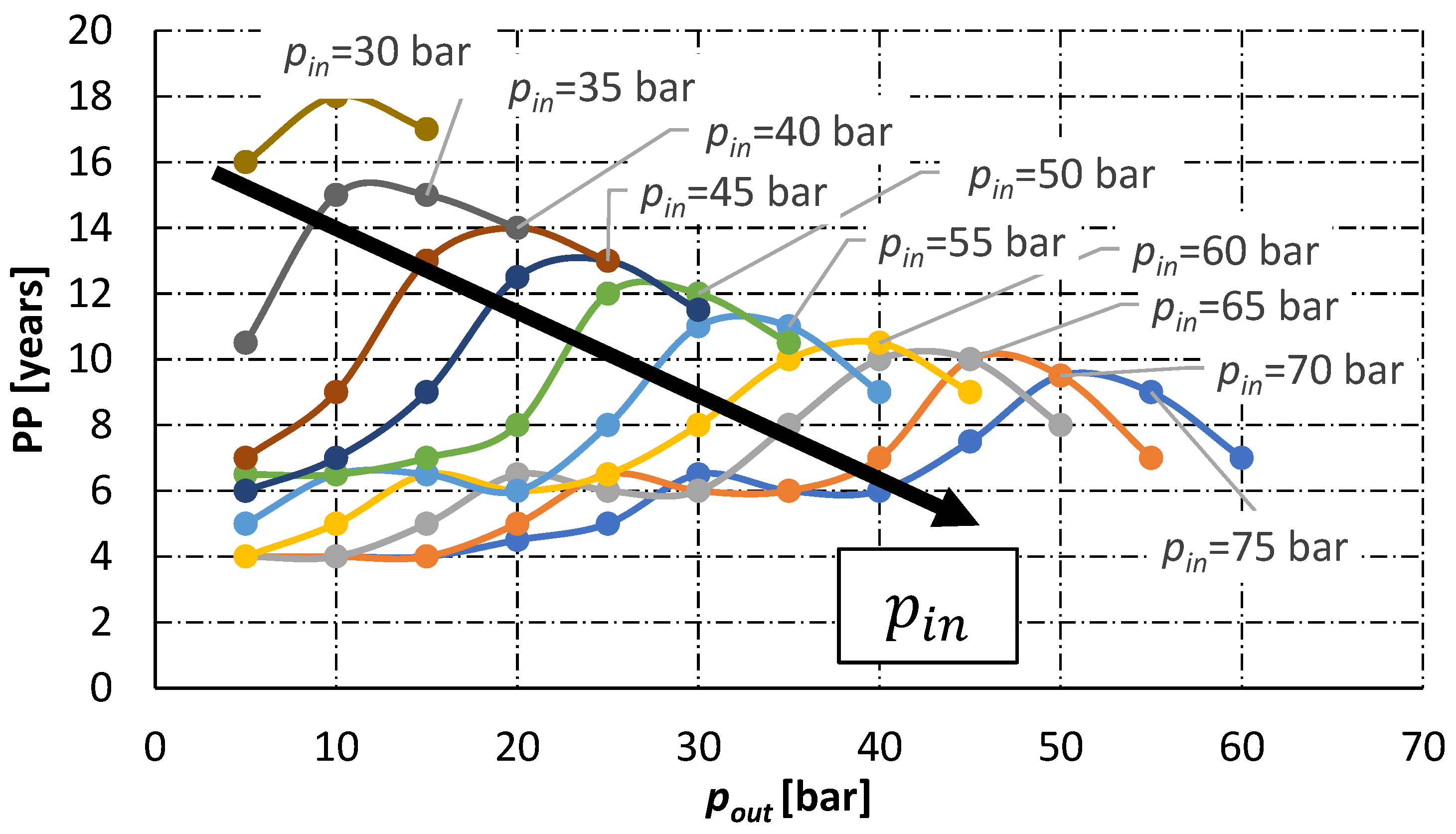
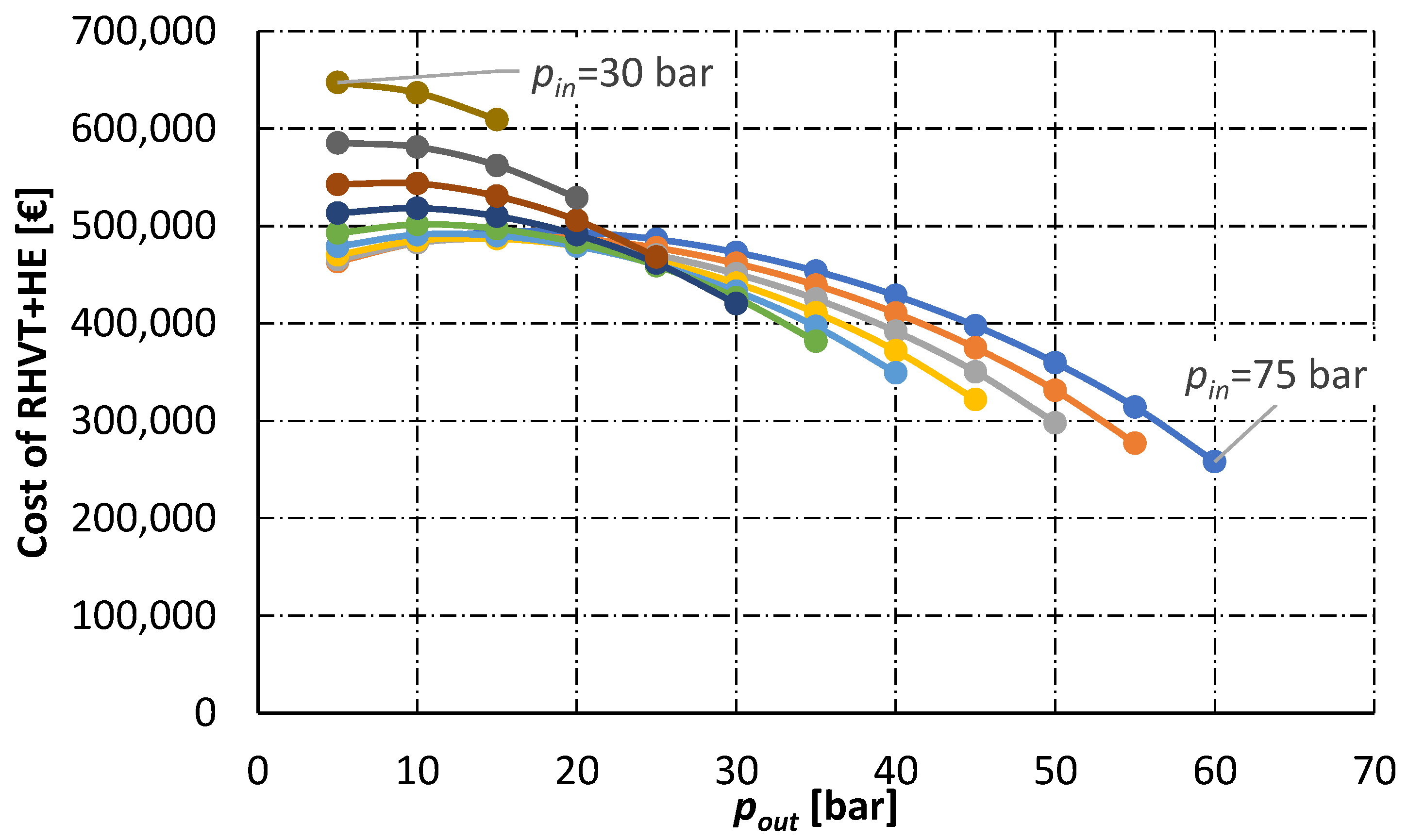
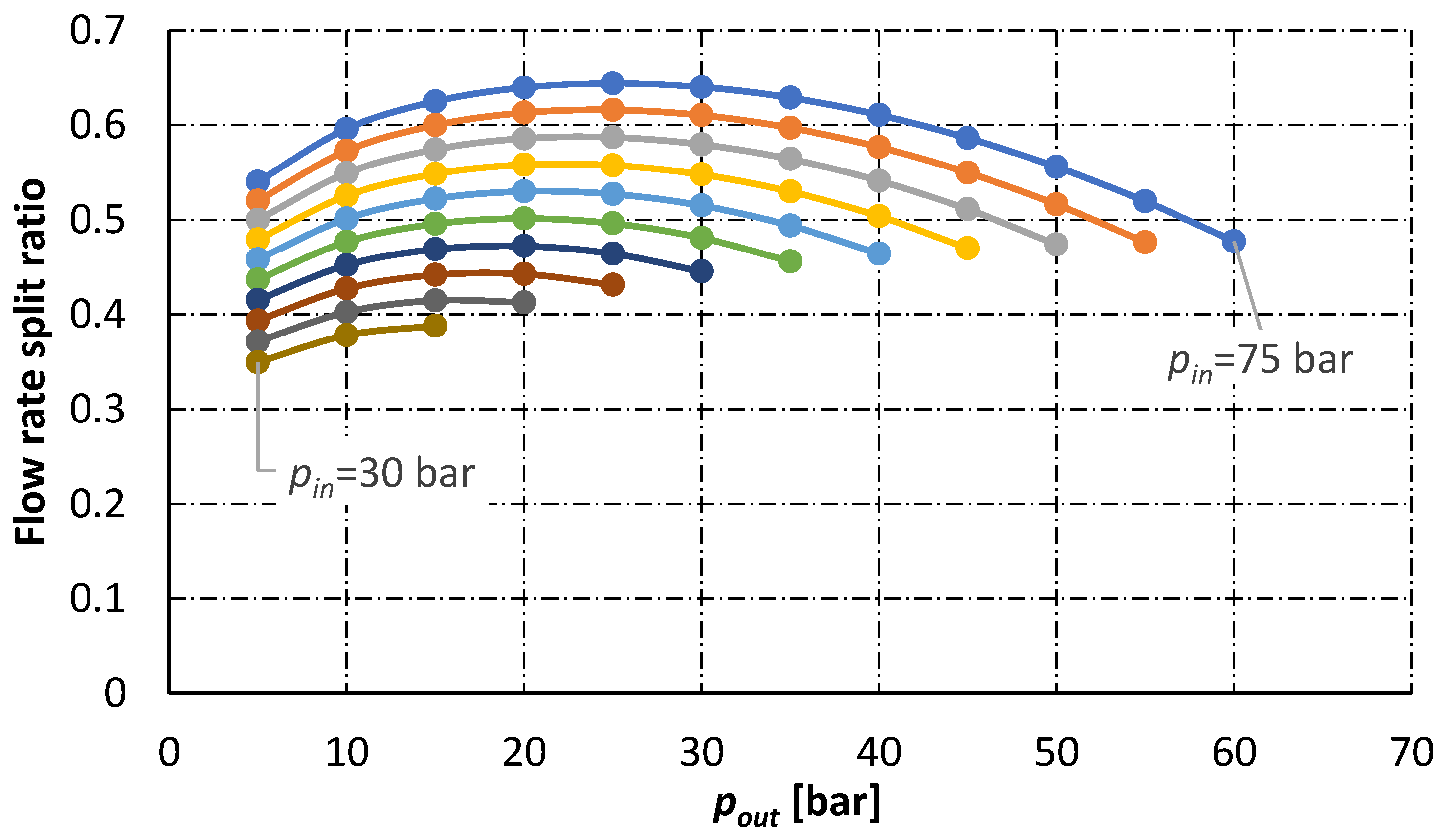

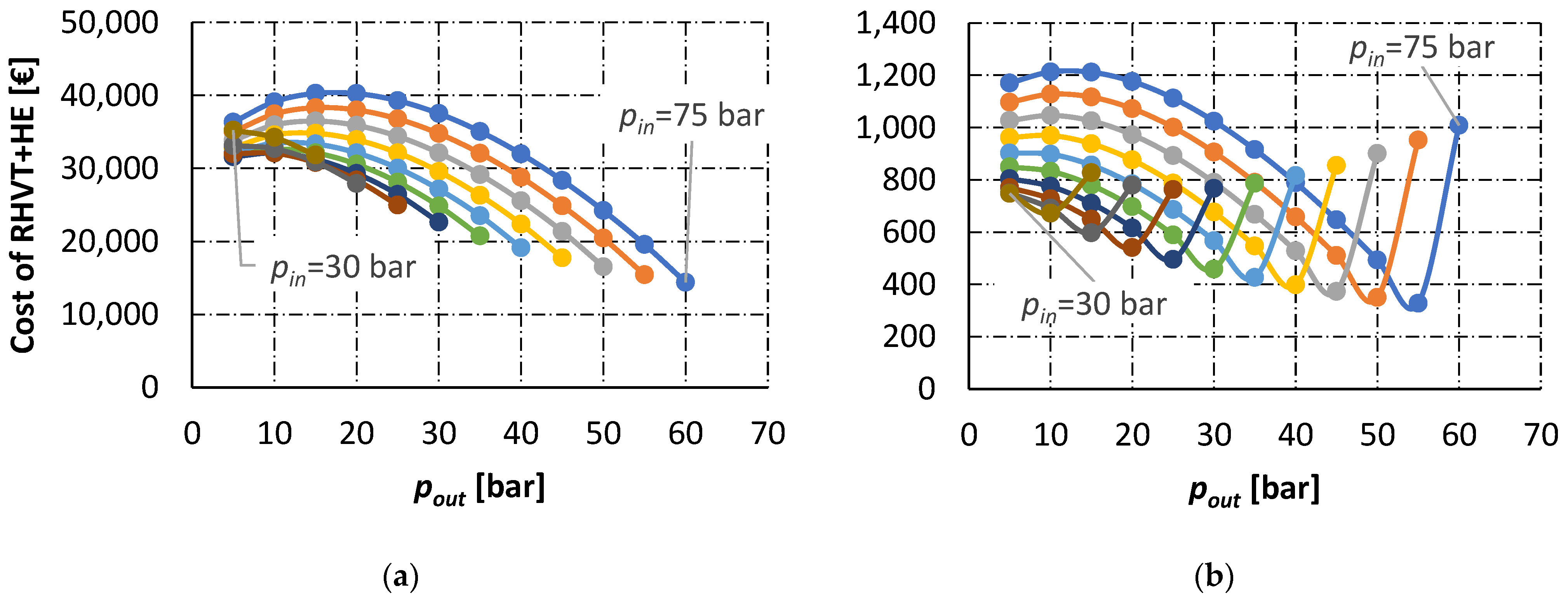
Appendix B.2. Sensitivity to Ambient Temperature

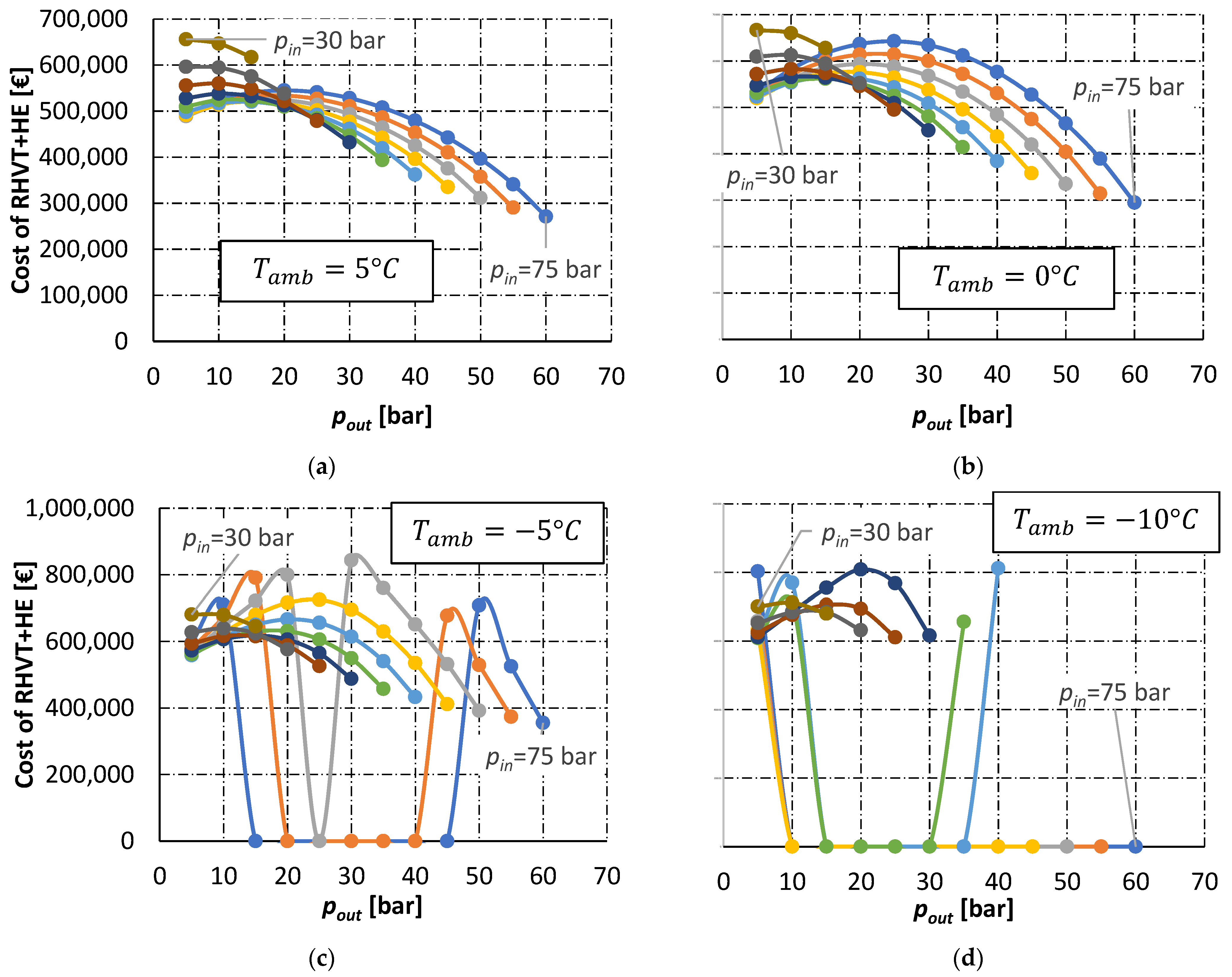
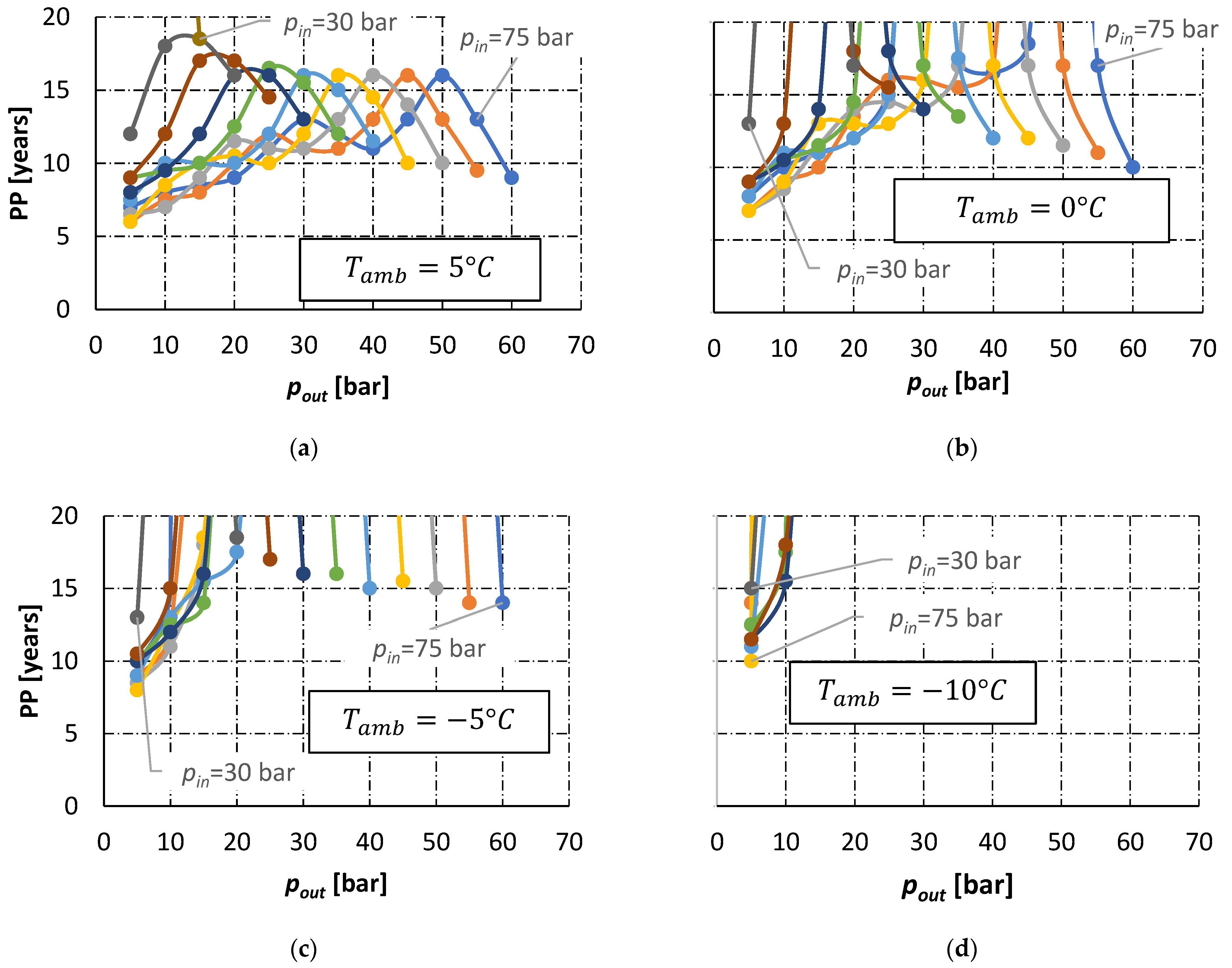
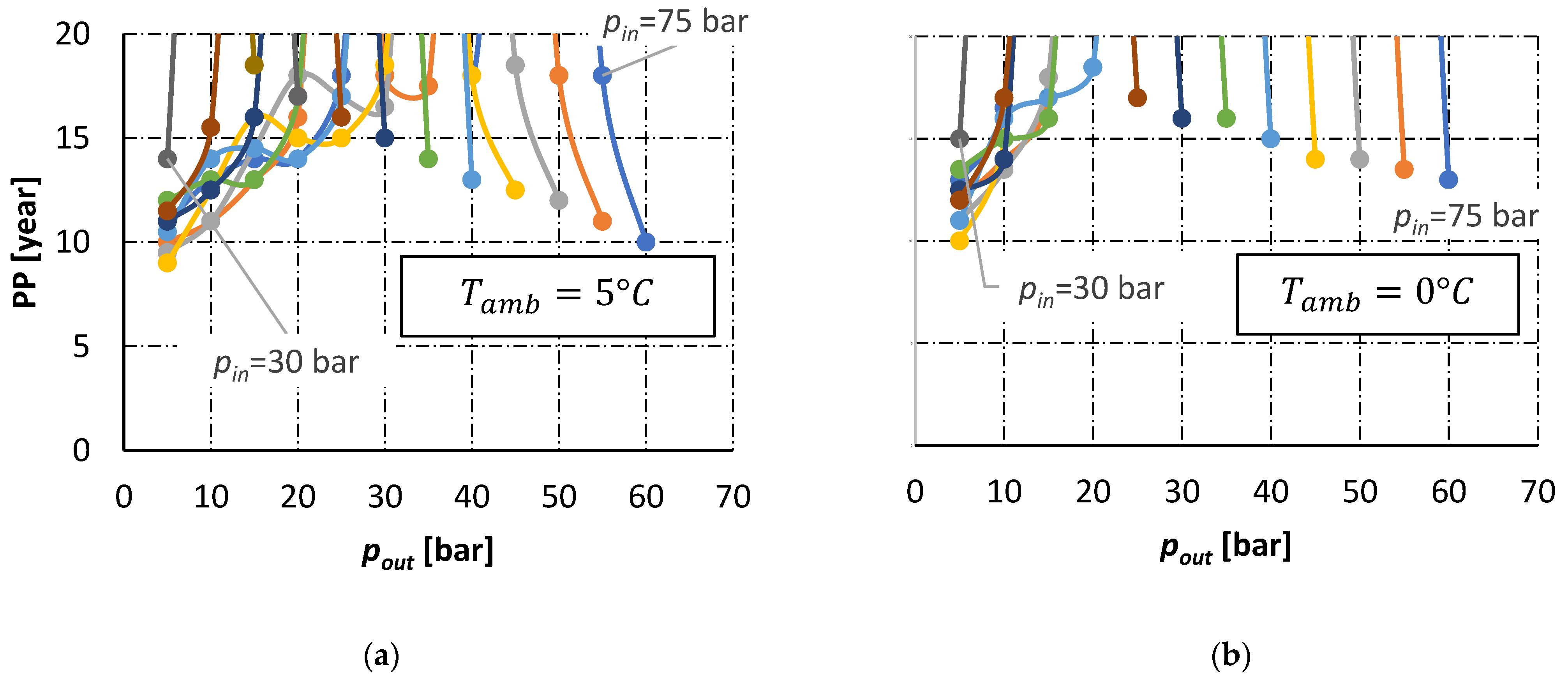

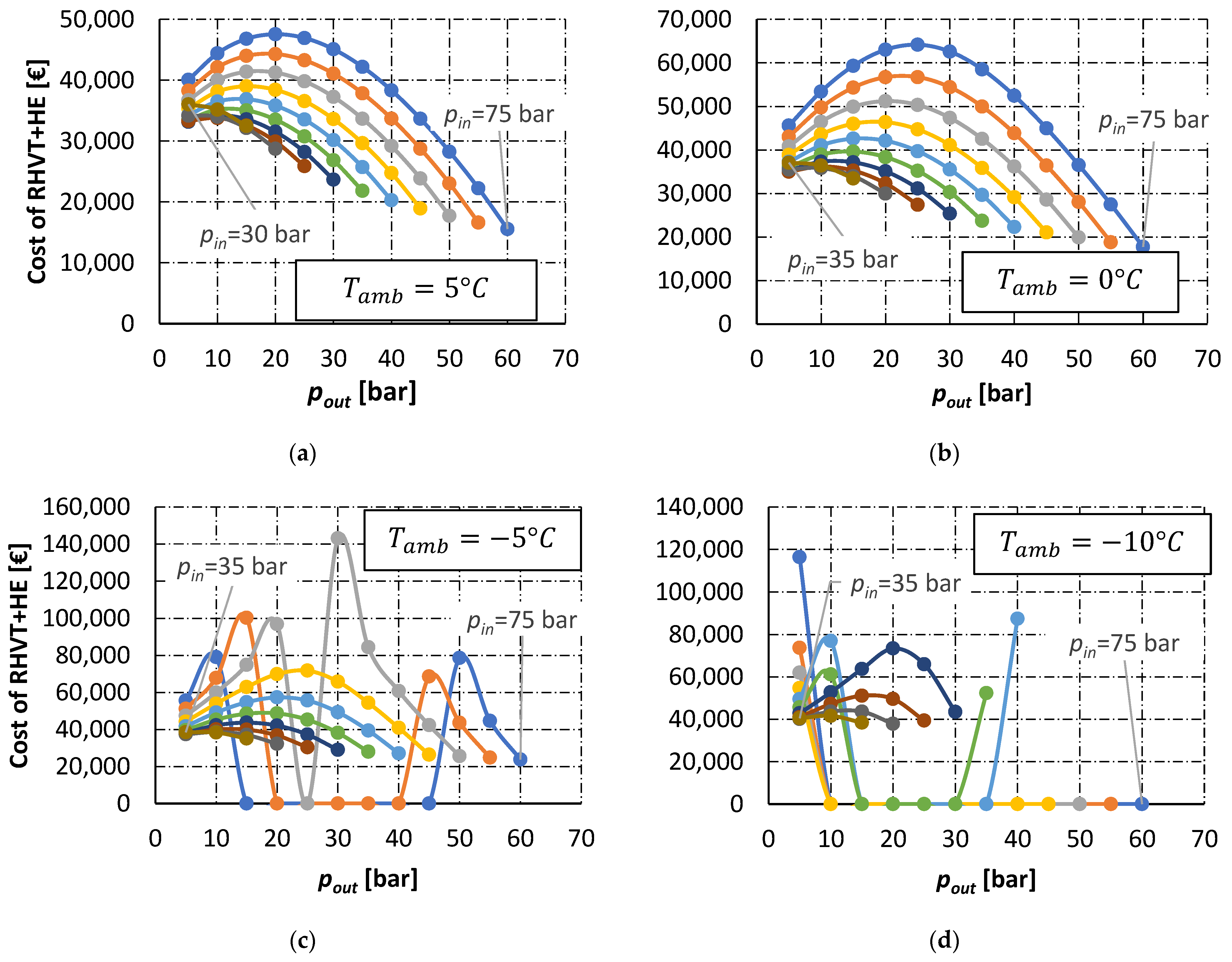
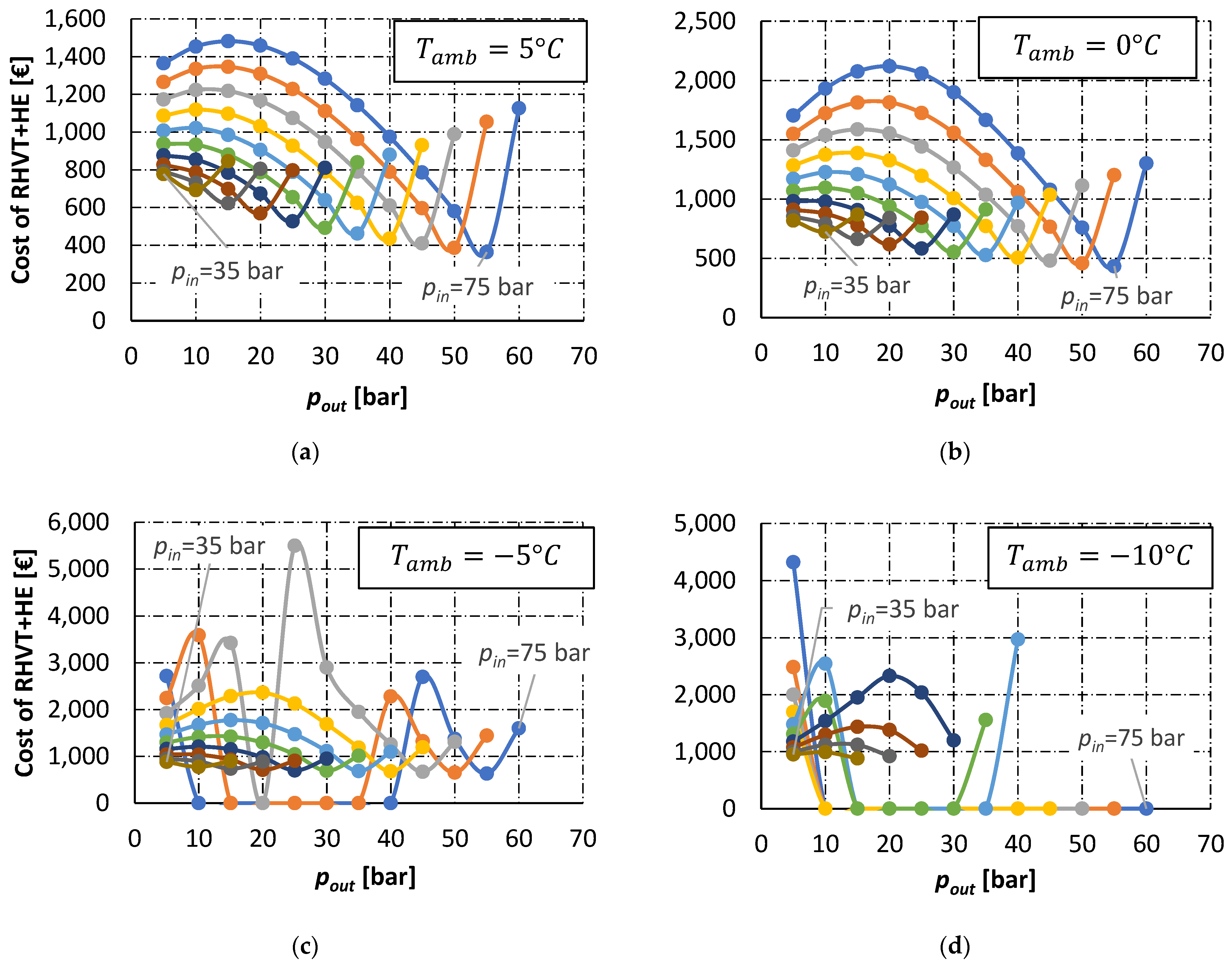
References
- Bloch, H.P.; Soares, C. Turboexpanders and Process Applications; Gulf Professional Publishing: Houston, TX, USA, 2001. [Google Scholar]
- Rheuban, J. Turbo Expanders: Harnessing the Hidden Potential of Our Natural Gas Distribution System. Available online: https://jacobrheuban.com/2009/03/09/turboexpanders-harnessing-the-hidden-potential-of-our-natural-gas-distribution-system/ (accessed on 10 December 2021).
- Mirandola, A.; Minca, L. Energy Recovery by Expansion of High Pressure Natural Gas. In Proceedings of the 21st Intersociety Energy Conversion Engineering Conference, San Diego, CA, USA, 25–29 August 1986; pp. 16–21. [Google Scholar]
- Mirandola, A.; Macor, A. Experimental Analysis of an Energy Recovery Plant by Expansion of Natural Gas. In Proceedings of the 23rd Intersociety Energy Conversion Engineering Conference, Denver, CO, USA, 31 July–5 August 1988; pp. 33–38. [Google Scholar]
- Danieli, P.; Carraro, G.; Lazzaretto, A. Thermodynamic and economic feasibility of energy recovery from pressure reduction stations in natural gas distribution networks. Energies 2020, 13, 4453. [Google Scholar] [CrossRef]
- Ghezelbash, R.; Farzaneh-Gord, M.; Sadi, M. Performance assessment of vortex tube and vertical ground heat exchanger in reducing fuel consumption of conventional pressure drop stations. Appl. Therm. Eng. 2016, 102, 213–226. [Google Scholar] [CrossRef]
- Guo, X.; Zhang, B. Experimental investigation on a novel pressure-driven heating system with Ranque–Hilsch vortex tube and ejector for pipeline natural gas pressure regulating process. Appl. Therm. Eng. 2019, 152, 634–642. [Google Scholar] [CrossRef]
- Hilsch, R. The use of the expansion of gases in a centrifugal field as cooling process. Rev. Sci. Instrum. 1947, 18, 108–113. [Google Scholar] [CrossRef] [PubMed]
- Lagrandeur, J.; Poncet, S.; Sorin, M. Review of predictive models for the design of counterflow vortex tubes working with perfect gas. Int. J. Therm. Sci. 2019, 142, 188–204. [Google Scholar] [CrossRef]
- Aswalekar, U.V.; Solanki, R.S.; Kaul, V.S.; Borkar, S.S.; Kambale, S.R. Study and Analysis of Vortex Tube. Int. J. Eng. Sci. Invent. 2014, 3, 51–55, Print: 2319–6726. [Google Scholar]
- Bilga, P.S.; Kaushik, S.C. Modeling of Temperature Separation Based on Ramming Effect and Heat Exchanger in a Ranque Hilsch Vortex Tube. Int. J. Green Energy 2008, 5, 373–387. [Google Scholar] [CrossRef]
- Ahlborn, B.; Keller, J.U.; Staudt, R.; Treitz, G.; Rebhan, E. Limits of temperature separation in a vortex tube. J. Phys. D Appl. Phys. 1994, 27, 480–488. [Google Scholar] [CrossRef]
- Cockerill, T.T. Thermodynamics and Fluid Mechanics of a Ranque Hilsch Vortex Tube. Ph.D. Thesis, University of Cambridge, Cambridge, UK, 1998. [Google Scholar]
- Xue, Y.; Jafarian, M.; Choudhry, A.; Arjomandi, M. The expansion process in counter-flow vortex tube. Vortex Sci. Technol. 2015, 2, 1000114. [Google Scholar]
- Bruun, H. Experimental investigation of the energy separation in vortex tubes. J. Mech. Eng. Sci. 1969, 11, 567–582. [Google Scholar] [CrossRef]
- Biryuk, V.; Gorshkalev, A.; Uglanov, D.; Urlapkin, V.; Korneev, S. A refined model for calculation of the vortex tube thermal characteristics. IOP Conf. Ser. Mater. Sci. Eng. 2018, 302, 12056. [Google Scholar] [CrossRef]
- Kargaran, M.; Arabkoohsar, A.; Hagighat-Hosini, S.; Farzaneh-Kord, V.; Farzaneh-Gord, M. The second law analysis of natural gas behavior within a vortex tube. Therm. Sci. 2013, 17, 1079–1092. [Google Scholar] [CrossRef]
- Polihronov, J.G.; Straatman, A.G. The maximum coefficient of performance (COP) of vortex tubes. Can. J. Phys. 2015, 93, 1279–1282. [Google Scholar] [CrossRef]
- Polihronov, J.G.; Straatman, A.G. The vortex tube effect without walls. Can. J. Phys. 2015, 93, 850–854. [Google Scholar] [CrossRef]
- Liew, R.; Zeegers, J.C.H.; Kuerten, H.; Michalek, W.R. Maxwell’s demon in the Ranque-Hilsch vortex tube. Phys. Rev. Lett. 2012, 109, 054503. [Google Scholar] [CrossRef] [Green Version]
- Bej, N.; Sinhamahapatra, K. Numerical analysis on the heat and work transfer due to shear in a hot cascade Ranque–Hilsch vortex tube. Int. J. Refrig. 2016, 68, 161–176. [Google Scholar] [CrossRef]
- Xue, Y.; Arjomandi, M.; Kelso, R. The working principle of a vortex tube. Int. J. Refrig. 2013, 36, 1730–1740. [Google Scholar] [CrossRef]
- Xue, Y.; Arjomandi, M.; Kelso, R. Experimental study of the thermal separation in a vortex tube. Exp. Therm. Fluid Sci. 2013, 46, 175–182. [Google Scholar] [CrossRef]
- Majidi, D.; Alighardashi, H.; Farhadi, F. Best vortex tube cascade for highest thermal separation. Int. J. Refrig. 2018, 85, 282–291. [Google Scholar] [CrossRef]
- Manimaran, R. Computational analysis of energy separation in a counter-flow vortex tube based on inlet shape and aspect ratio. Energy 2016, 107, 17–28. [Google Scholar] [CrossRef]
- Aljuwayhel, N.; Nellis, G.; Klein, S. Parametric and internal study of the vortex tube using a CFD model. Int. J. Refrig. 2005, 28, 442–450. [Google Scholar] [CrossRef]
- Liu, X.; Liu, Z. Investigation of the energy separation effect and flow mechanism inside a vortex tube. Appl. Therm. Eng. 2014, 67, 494–506. [Google Scholar] [CrossRef]
- Sadeghiseraji, J.; Moradicheghamahi, J.; Sedaghatkish, A. Investigation of a vortex tube using three different RANS-based turbulence models. J. Therm. Anal. Calorim. 2021, 143, 4039–4056. [Google Scholar] [CrossRef]
- Subudhi, S.; Sen, M. Review of Ranque–Hilsch vortex tube experiments using air. Renew. Sustain. Energy Rev. 2015, 52, 172–178. [Google Scholar] [CrossRef]
- Sankar Ram, T.; Anish Raj, K. An Experimental Performance Study of Vortex Tube Refrigeration System. Int. J. Eng. Dev. Res. 2013, 17–21. [Google Scholar]
- Liew, R.; Zeegers, J.C.H.; Kuerten, J.G.M.; Michałek, W.R. Temperature, Pressure and Velocity measurements on the Ranque-Hilsch Vortex Tube. J. Phys. Conf. Ser. 2012, 395, 012066. [Google Scholar] [CrossRef]
- Williams, A. The cooling of methane with vortex tubes. J. Mech. Eng. Sci. 1971, 13, 369–375. [Google Scholar] [CrossRef]
- Agrawal, N.; Naik, S.; Gawale, Y. Experimental investigation of vortex tube using natural substances. Int. Commun. Heat Mass Transf. 2014, 52, 51–55. [Google Scholar] [CrossRef]
- Jafargholinejad, S.; Heydari, N. Simulation of vortex tube using natural gas as working fluid with application in city gas stations. In Proceedings of the 12th International Conference on Heat Transfer, Fluid Mechanics and Thermodynamics, Costa del Sol, Spain, 11–13 July 2016. [Google Scholar]
- Parker, M.J.; Straatman, A.G. Experimental study on the impact of pressure ratio on temperature drop in a Ranque-Hilsch vortex tube. Appl. Therm. Eng. 2021, 189, 116653. [Google Scholar] [CrossRef]
- Kirmaci, V.; Kaya, H. Effects of working fluid, nozzle number, nozzle material and connection type on thermal performance of a Ranque–Hilsch vortex tube: A review. Int. J. Refrig. 2018, 91, 254–266. [Google Scholar] [CrossRef]
- Yilmaz, M.; Kaya, M.; Karagoz, S.; Erdogan, S. A review on design criteria for vortex tubes. Heat Mass Transf. 2009, 45, 613–632. [Google Scholar] [CrossRef]
- Moraveji, A.; Toghraie, D. Computational fluid dynamics simulation of heat transfer and fluid flow characteristics in a vortex tube by considering the various parameters. Int. J. Heat Mass Transf. 2017, 113, 432–443. [Google Scholar] [CrossRef]
- Rafiee, S.E.; Sadeghiazad, M.M. Experimental and CFD analysis on thermal performance of Double-Circuit vortex tube (DCVT)-geometrical optimization, energy transfer and flow structural analysis. Appl. Therm. Eng. 2018, 128, 1223–1237. [Google Scholar] [CrossRef]
- Rafiee, S.E.; Sadeghiazad, M.M. Improving the energetical performance of vortex tubes based on a comparison between parallel, Ranque-Hilsch and Double-Circuit vortex tubes using both experimental and CFD approaches. Appl. Therm. Eng. 2017, 123, 1223–1236. [Google Scholar] [CrossRef]
- Dincer, K.; Baskaya, S.; Uysal, B.; Ucgul, I. Experimental investigation of the performance of a Ranque–Hilsch vortex tube with regard to a plug located at the hot outlet. Int. J. Refrig. 2009, 32, 87–94. [Google Scholar] [CrossRef]
- Valipour, M.S.; Niazi, N. Experimental modeling of a curved Ranque–Hilsch vortex tube refrigerator. Int. J. Refrig. 2011, 34, 1109–1116. [Google Scholar] [CrossRef]
- Im, S.; Yu, S. Effects of geometric parameters on the separated air flow temperature of a vortex tube for design optimization. Energy 2012, 37, 154–160. [Google Scholar] [CrossRef]
- Mohammadi, S.; Farhadi, F. Experimental analysis of a Ranque–Hilsch vortex tube for optimizing nozzle numbers and diameter. Appl. Therm. Eng. 2013, 61, 500–506. [Google Scholar] [CrossRef]
- Kumar, G.S.; Padmanabhan, G.; Sarma, B.D. Optimizing the Temperature of Hot outlet Air of Vortex Tube using Taguchi Method. Procedia Eng. 2014, 97, 828–836. [Google Scholar] [CrossRef] [Green Version]
- Bazgir, A.; Heydari, A.; Bazooyar, B.; Mohammadniakan, M.; Nabhani, N. Numerical investigation of the energy separation effect and flow mechanism inside convergent, straight, and divergent double-sleeve RHVT. Heat Transfer-Asian Res. 2020, 49, 533–564. [Google Scholar] [CrossRef]
- Cang, R. Optimized Vortex Tube Bundle for Large Flow Rate Applications. Master’s Thesis, Arizona State University, Tempe, AZ, USA, 2013. [Google Scholar]
- Korkmaz, M.E.; Gumusel, L.; Markal, B. Using artificial neural network for predicting performance of the Ranque–Hilsch vortex tube. Int. J. Refrig. 2012, 35, 1690–1696. [Google Scholar] [CrossRef]
- Thakare, H.; Monde, A.; Parekh, A.D. Experimental, computational and optimization studies of temperature separation and flow physics of vortex tube: A review. Renew. Sustain. Energy Rev. 2015, 52, 1043–1071. [Google Scholar] [CrossRef]
- Vortex Tube Technical Datasheet from Vortec, an ITW Company. Available online: https://www.vortec.com/Content/Images/uploaded/literature/Vortex%20Tube%20Brochure%2021’.pdf (accessed on 10 December 2021).
- Tunkel, L. Eliminating need for gas preheat in pressure regulation. Pipeline Gas J. 2013. [Google Scholar]
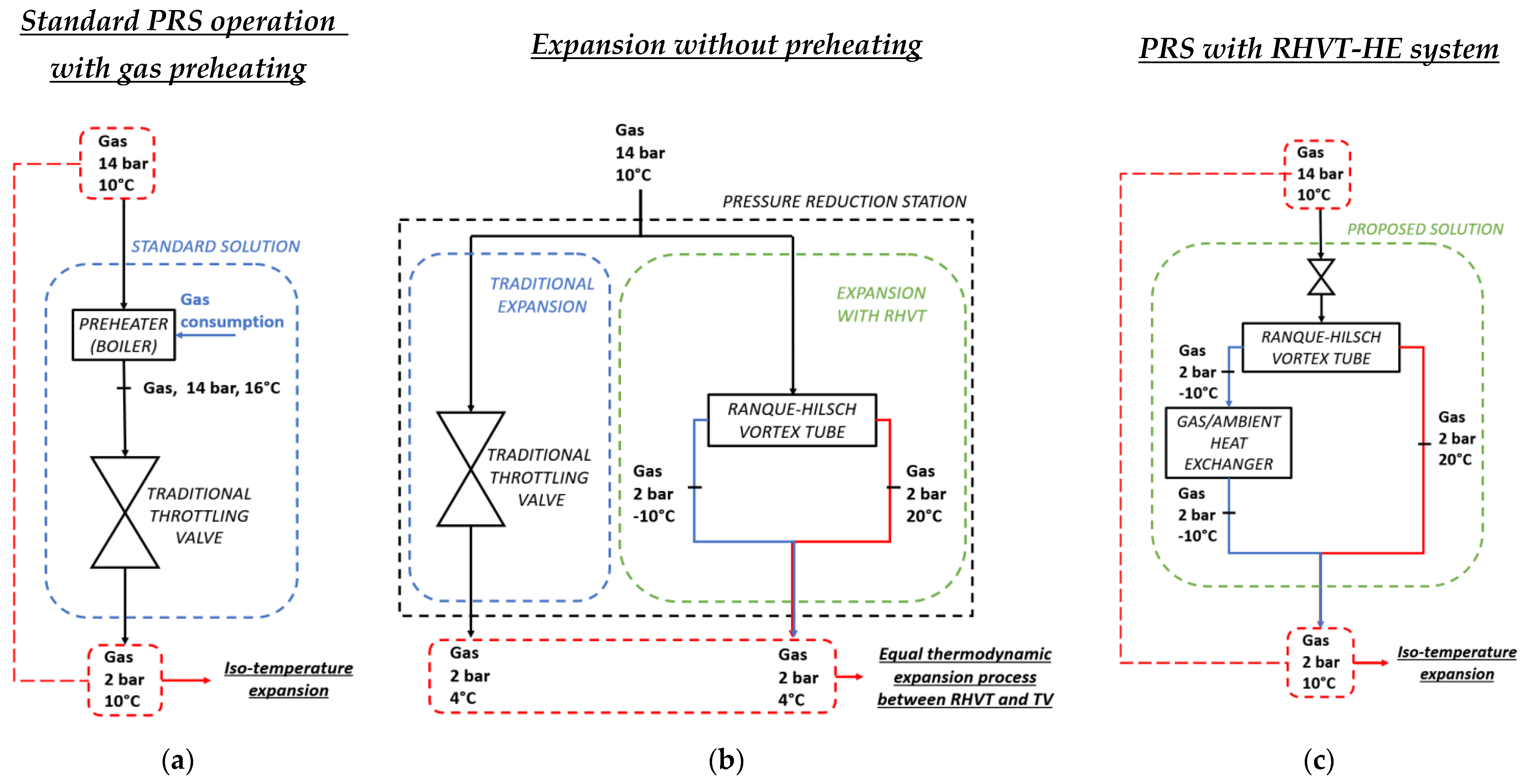

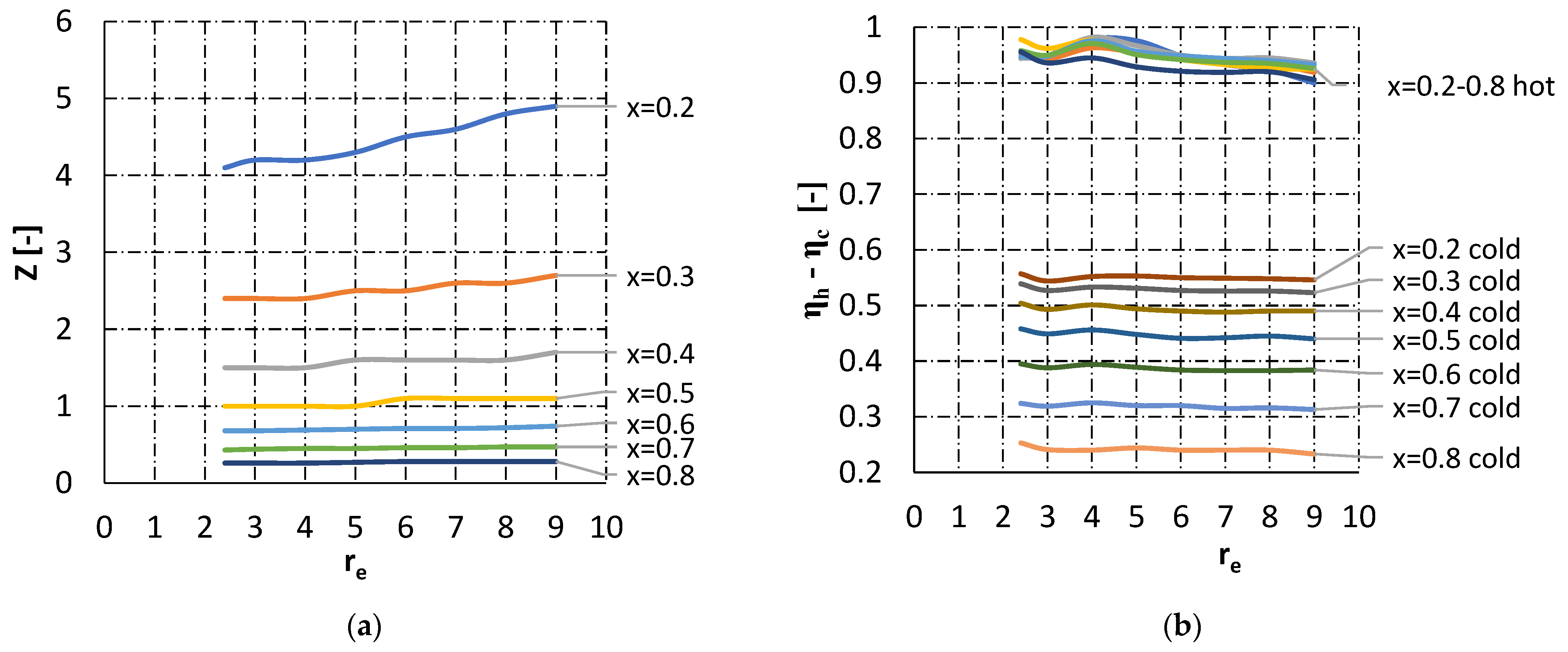
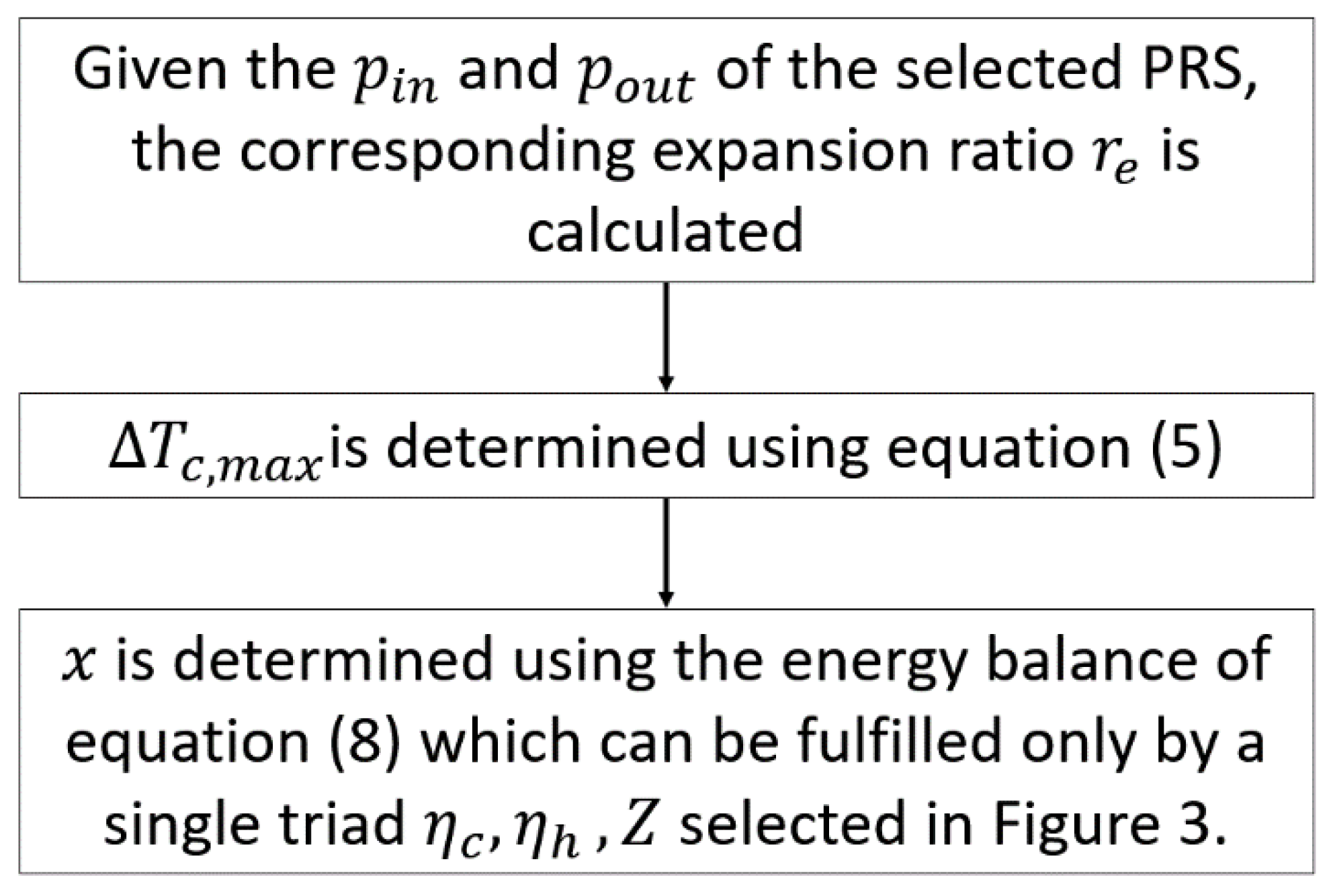



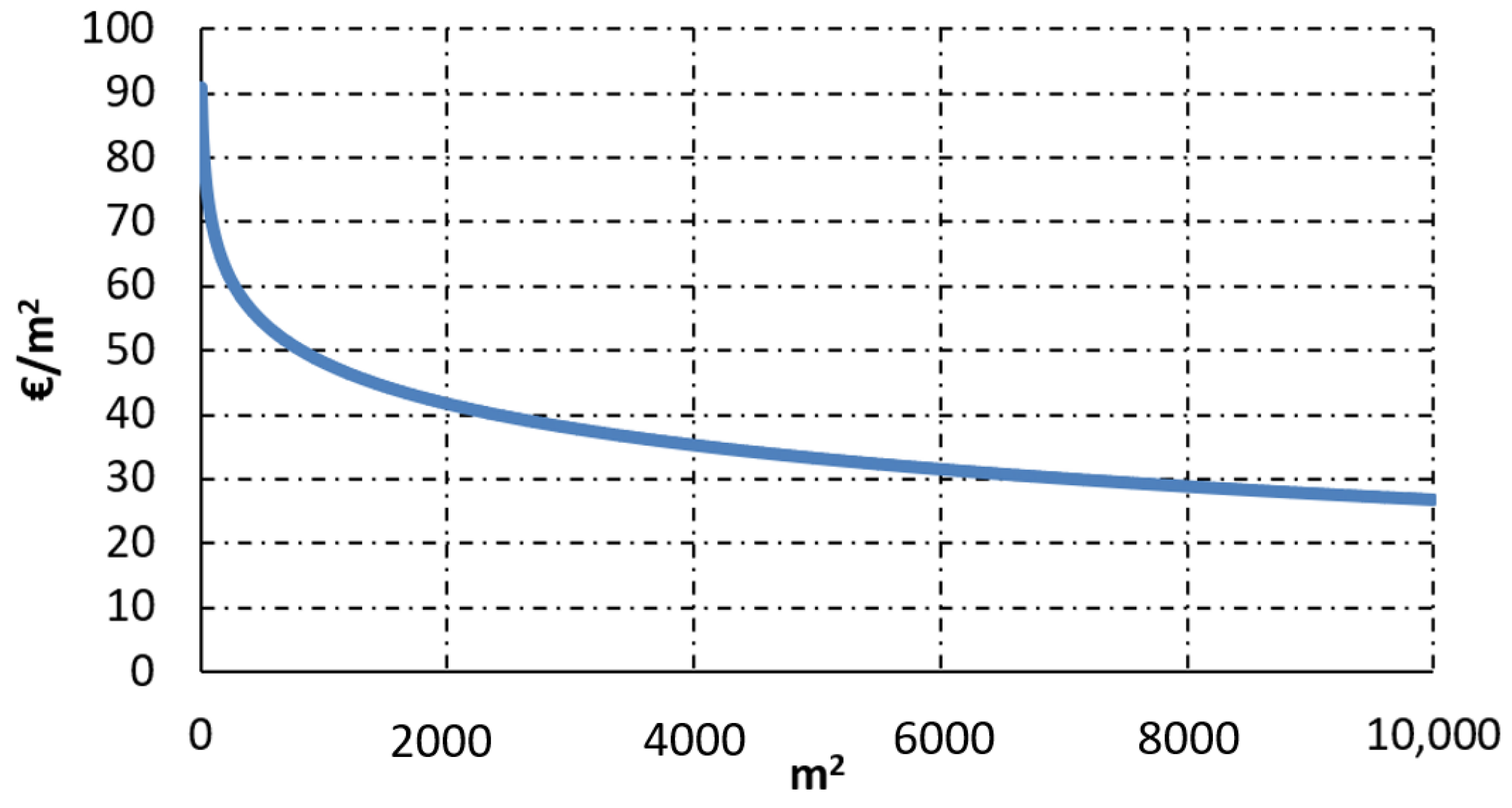



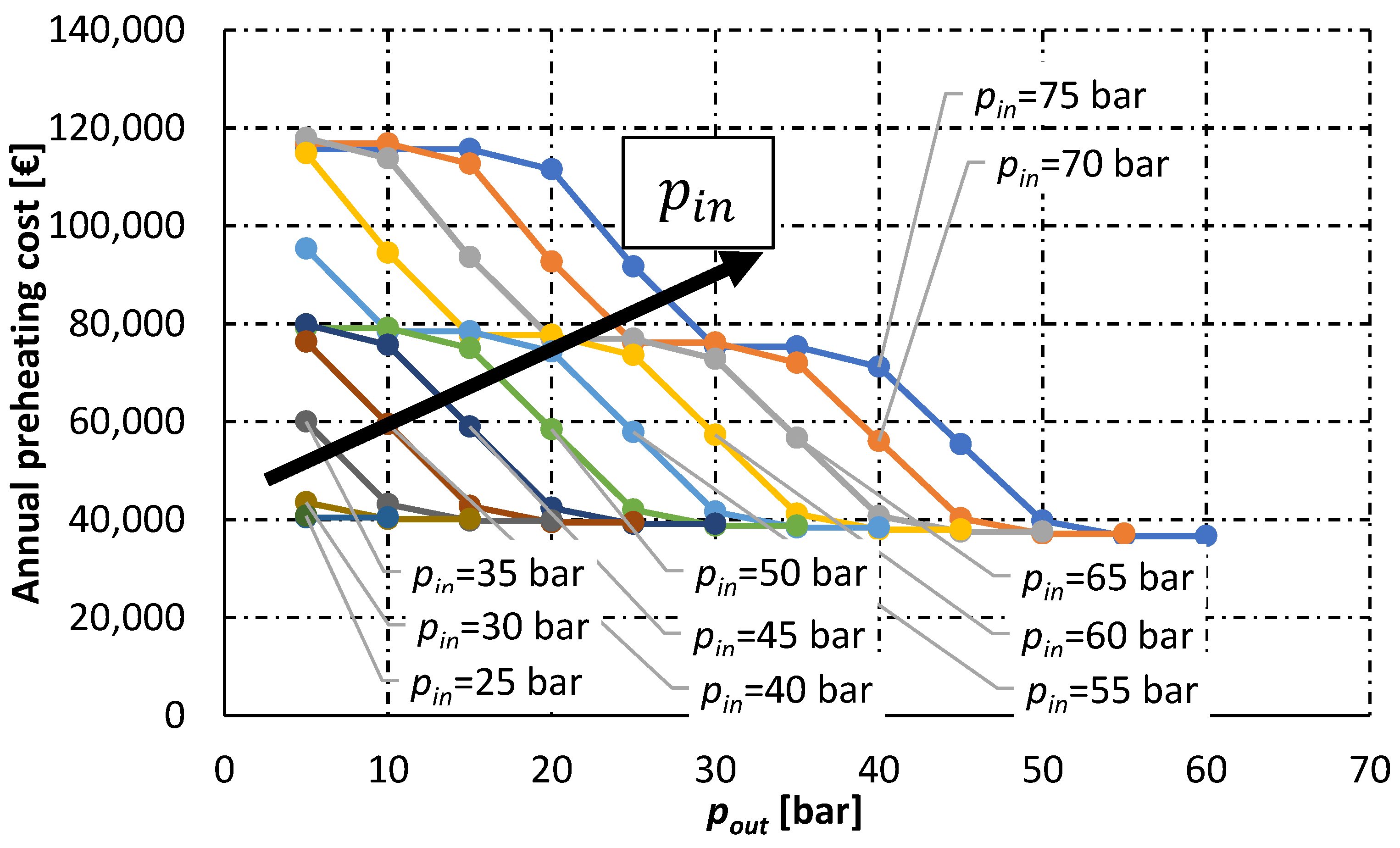
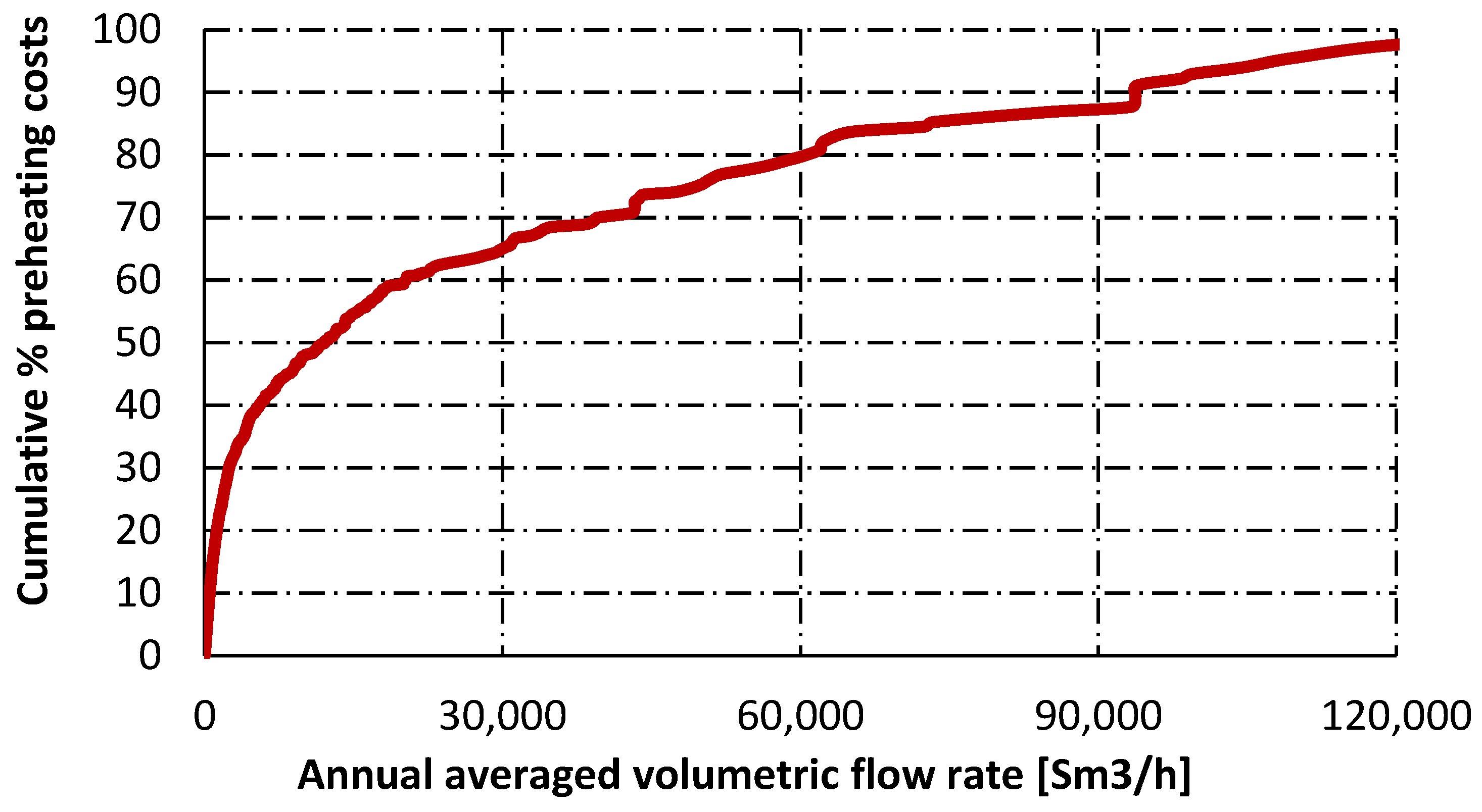
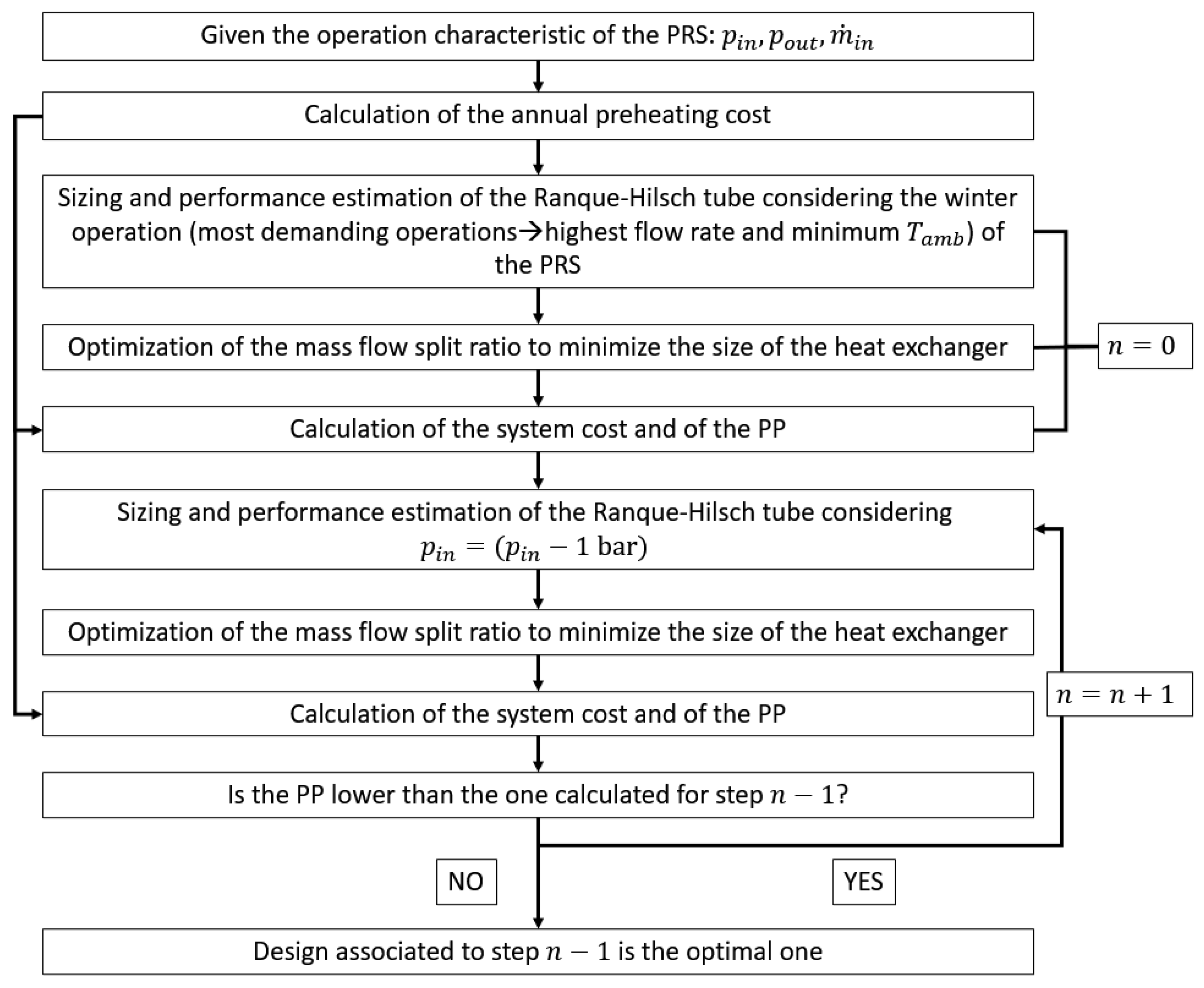



| 75 | 70 | 65 | 60 | 55 | 50 | 45 | 40 | 35 | 30 | 25 | 20 | |
| 60 | 55 | 50 | 45 | 40 | 35 | 30 | 25 | 20 | 15 | 10 | 5 | |
| 100 | 5000 | 100,000 |
| Tamb | 10 °C | 5 °C | 0 °C | −5 °C | −10 °C | ||||||||||
|---|---|---|---|---|---|---|---|---|---|---|---|---|---|---|---|
| %PH | %PRS | PP | %PH | %PRS | PP | %PH | %PRS | PP | %PH | %PRS | PP | %PH | %PRS | PP | |
| 98.4 | 91.1 | <20 | 98.3 | 85.4 | <20 | 96.5 | 62.1 | <20 | 33.3 | 23.1 | <20 | 11.6 | 6.7 | <20 | |
| 78.7 | 8.6 | <9 | 78.7 | 8.6 | <11 | 77.2 | 7.8 | <16 | 26.6 | 2.8 | <19 | 9.3 | 0.6 | <16 | |
| 59 | 2.2 | <8 | 59 | 2.2 | <10 | 57.9 | 2 | <12 | 20 | 1 | <18 | 7 | 0.21 | <16 | |
| 39.4 | 0.74 | <7 | 39.4 | 0.74 | <9 | 38.6 | 0.7 | <10 | 13.3 | 0.37 | <16 | 4.6 | 0.08 | <16 | |
| 19.7 | 0.24 | <6 | 19.7 | 0.24 | <7 | 19.3 | 0.22 | <8 | 6.7 | 0.11 | <16 | 2.32 | 0.04 | <16 | |
Publisher’s Note: MDPI stays neutral with regard to jurisdictional claims in published maps and institutional affiliations. |
© 2022 by the authors. Licensee MDPI, Basel, Switzerland. This article is an open access article distributed under the terms and conditions of the Creative Commons Attribution (CC BY) license (https://creativecommons.org/licenses/by/4.0/).
Share and Cite
Danieli, P.; Masi, M.; Lazzaretto, A.; Carraro, G.; Volpato, G. A Smart Energy Recovery System to Avoid Preheating in Gas Grid Pressure Reduction Stations. Energies 2022, 15, 371. https://doi.org/10.3390/en15010371
Danieli P, Masi M, Lazzaretto A, Carraro G, Volpato G. A Smart Energy Recovery System to Avoid Preheating in Gas Grid Pressure Reduction Stations. Energies. 2022; 15(1):371. https://doi.org/10.3390/en15010371
Chicago/Turabian StyleDanieli, Piero, Massimo Masi, Andrea Lazzaretto, Gianluca Carraro, and Gabriele Volpato. 2022. "A Smart Energy Recovery System to Avoid Preheating in Gas Grid Pressure Reduction Stations" Energies 15, no. 1: 371. https://doi.org/10.3390/en15010371
APA StyleDanieli, P., Masi, M., Lazzaretto, A., Carraro, G., & Volpato, G. (2022). A Smart Energy Recovery System to Avoid Preheating in Gas Grid Pressure Reduction Stations. Energies, 15(1), 371. https://doi.org/10.3390/en15010371









